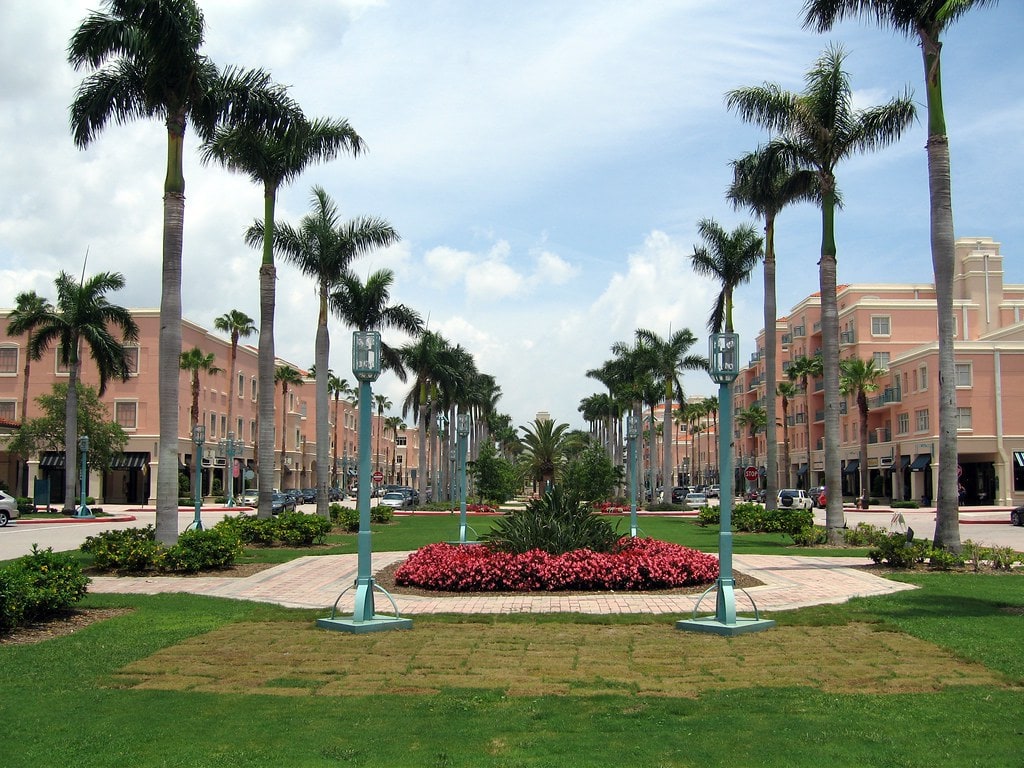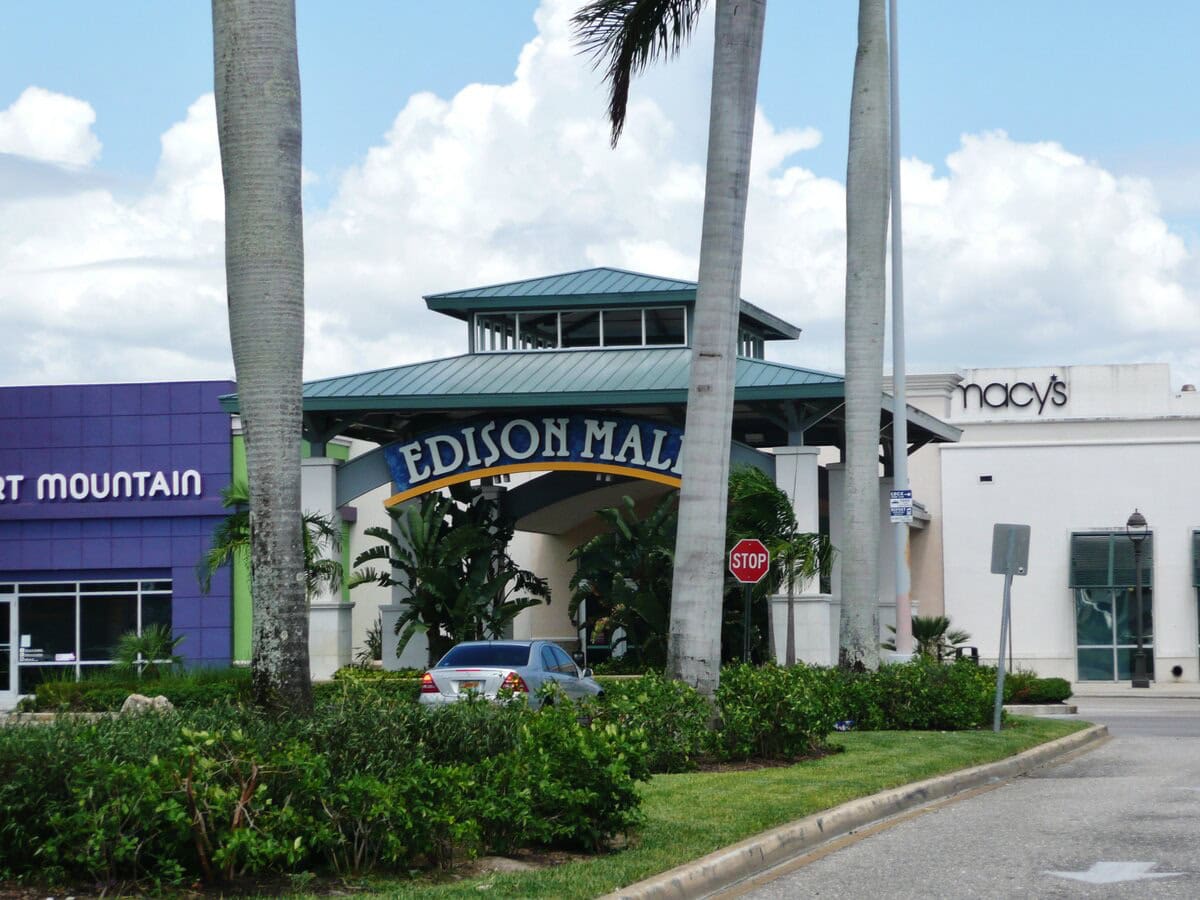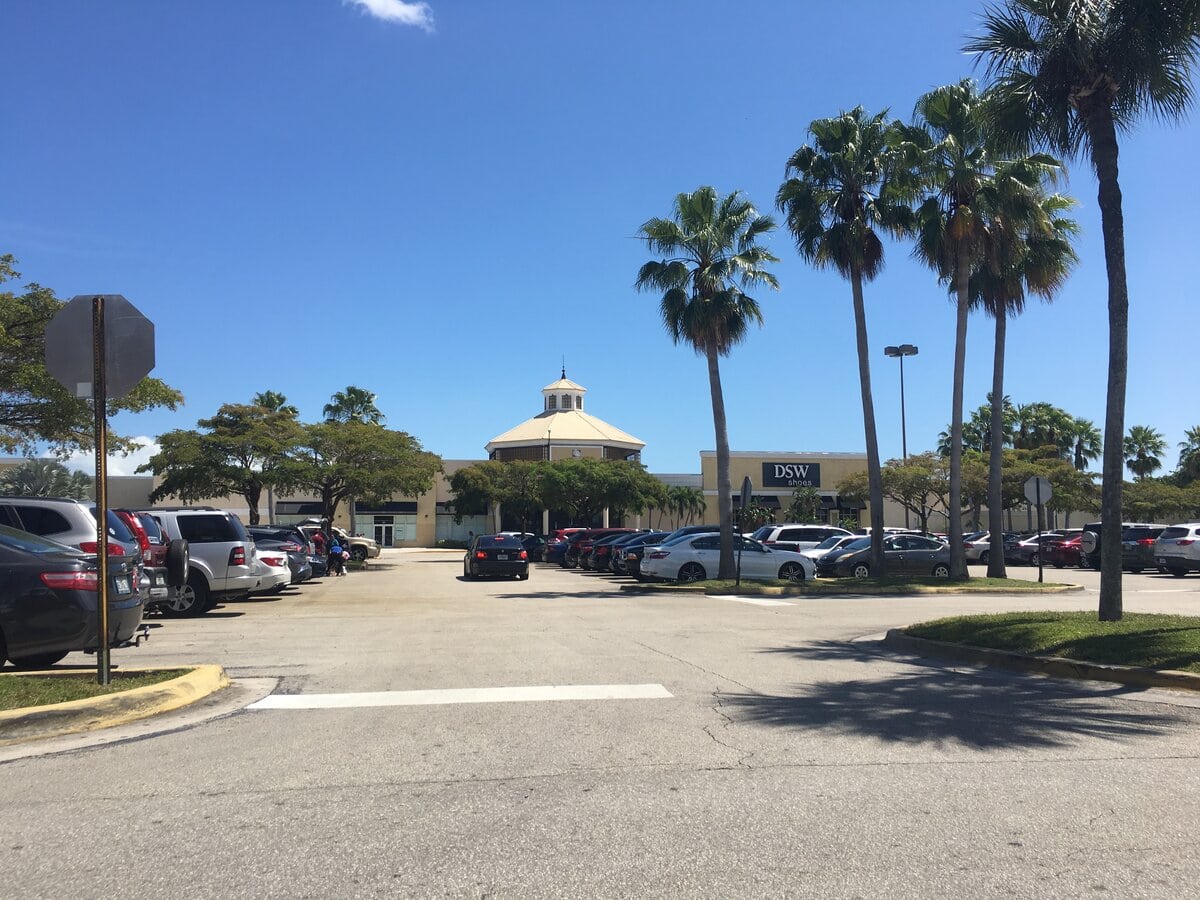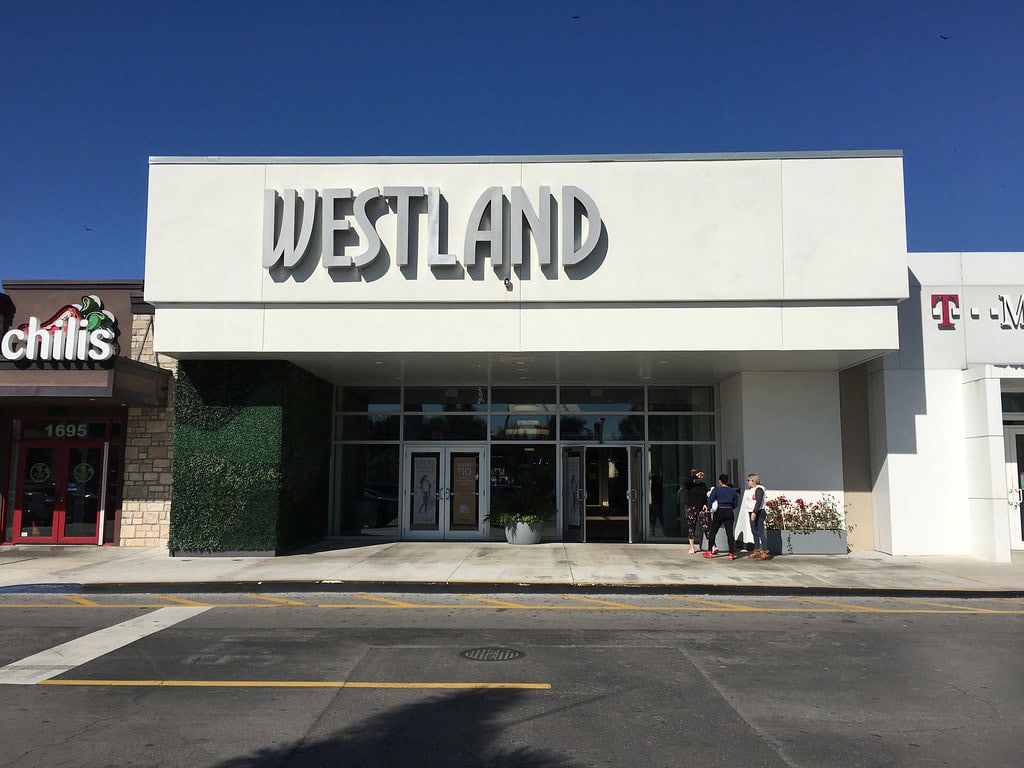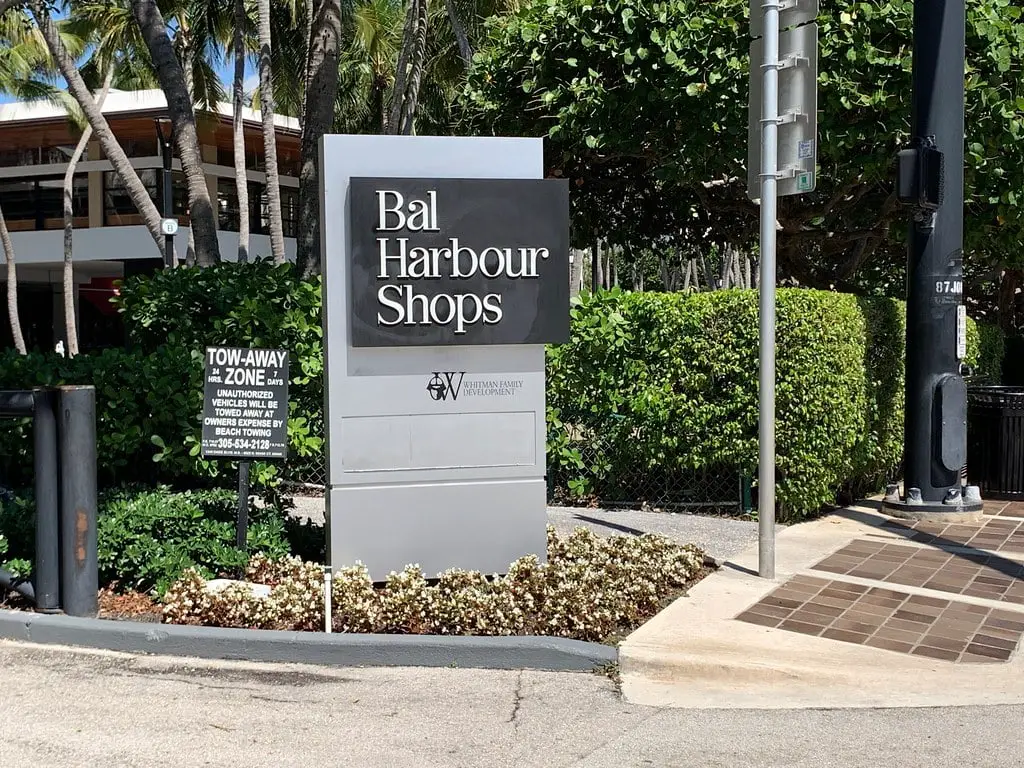Golf, streets, and Miami International Mall
Before Miami International Mall had a name, the land around what is now 1455 NW 107th Avenue was a wet, wild place that only a developer would want.
In the late 1950s, Alfred and Doris Kaskel bought 2,400 acres of swampy land in the western part of the county, put their first names together to make "Doral," and turned part of it into a golf resort that joined the PGA Tour in 1962. The golf courses were there long before the grocery stores.
By the early 1980s, western Miami-Dade was still not an official city, a quiet part of the county just starting to get gated neighborhoods like Doral Estates and Doral Park.
But it still did not have a real place to buy school clothes, mattresses, or perfume. That gap was exactly the kind of opportunity the Edward J. DeBartolo Corporation wanted.
DeDeBartolo, which had already changed suburban life with its indoor malls, built an air-conditioned, million-square-foot center here in August 1982 and called it Miami International Mall, taking some of its style from the airport eight miles to the east.
The original anchors, Burdines and Jordan Marsh, opened first; Sears opened in 1983. The building style was Mediterranean, with warm colors, landscaped walkways, water features, and huge parking lots shining in the heat.
Inside, shoppers walked into a cool, comfortable version of everyday American life that Doral had not had before.
From Burdines to Macy's: anchors on the move
Inside, the early mall behaved like a fantasy of indoor urbanism.
Tall trees grew from planters along the concourses, five little wishing-well fountains collected coins and wishes, and a small train circled the center court.
The star attraction was a low, spreading fountain that seemed to pour directly out of the tile floor, a backdrop for first dates, prom photos, and bored toddlers dangling their fingers in the spray.
The anchor line-up evolved almost as quickly as the fashions on display. In 1985, Lord & Taylor opened as the mall's fourth department store, bringing some Northeastern style to western Dade.
By 1991, it had closed and was replaced by Mervyn's, a California store that offered practical clothes for families instead of luxury items.
That same year, the Jordan Marsh box lost its own identity.
After the corporate reshuffling of Federated and Allied, the store was rebadged as a Burdines men's, home, and furniture location, while the original Burdines handled everything else.
JCPenney joined in 1992, completing a group of five big stores that made Miami International Mall feel, for a while, like the perfect example of a regional mall: reliable, air-conditioned, and surrounded by well-known brands.

Renovation, fountains drained, Dolphin arrives
The mall, which in earlier years passed for futuristic, by the late 1990s resembled nothing more than an illustration from an old brochure, one slipped into a tourist packet and erased from mind almost straightaway.
Trying for a Mediterranean promenade effect, the indoor trees under glass dropped their leaves into planters that seemed to lag a full cleaning shift behind schedule.
The fountains, once the gleaming punctuation marks of the concourses, had come to seem like intricate plumbing experiments filmed over with coins and lime.
Even the little train that circled center court felt awkwardly stuck between nostalgia and liability, indulged more than adored.
In 1997, Dillard's moved into the former Mervyn's box with barely a ripple, less a grand opening than another quiet turn in the long, slow game of department store musical chairs.
What came next was not tweaking but erasure. Around 2000, the owners ordered the sort of comprehensive renovation that spread through Sun Belt malls at the turn of the century.
The interior landscaping vanished, the fountains were capped, and the walkways were opened up into long, bright corridors with polished tile and a vaguely international styling that nodded at everywhere and nowhere in particular.
Burdines took the opportunity to grow upward, adding a second floor to its original store and handing that new real estate over to women and children, while the former Jordan Marsh building settled into its revised role as the place for menswear and home goods.
Grand reopening came in 2001 for the mall, timed almost on top of a new competitor rising a short drive to the west.
Dolphin Mall arrived with outlet pricing, tour buses, and an overt pitch to visitors who wanted brand names at a discount.
The two centers quickly fell into a kind of uneasy harmony: Dolphin as the bargain-hunter's field trip, Miami International Mall as the more traditional, fully enclosed habitat for locals who still preferred full-price counters, predictable climate, and the quiet satisfaction of finding the same parking spot every Saturday.
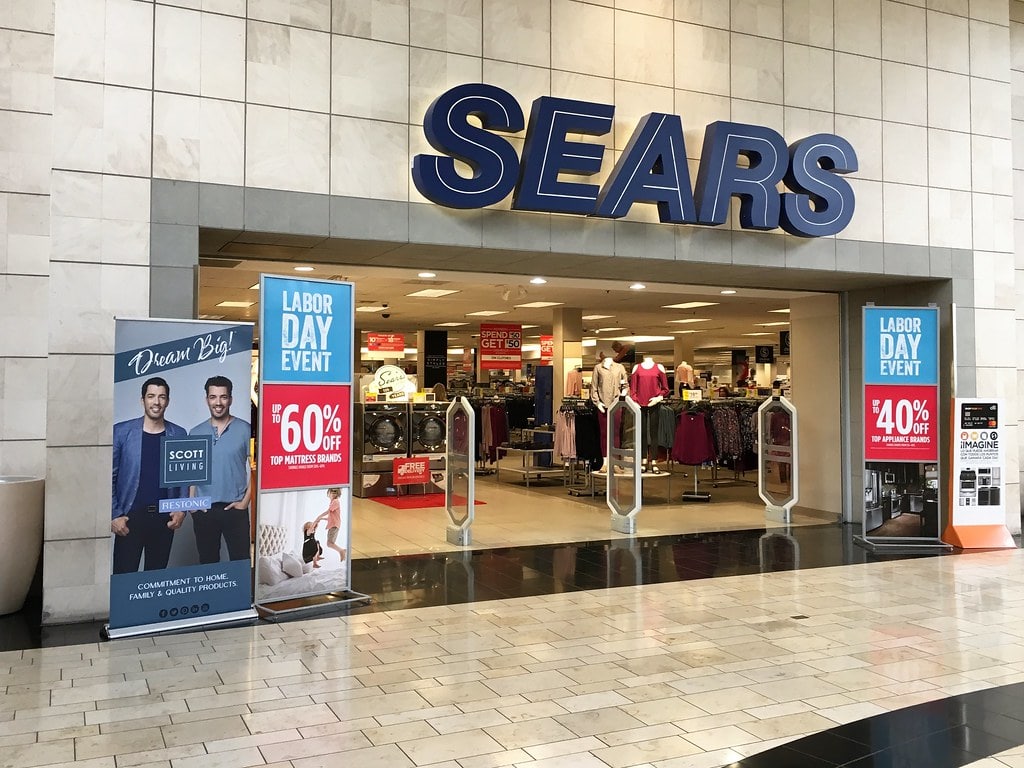
Doral grows up around its million square feet
Outside the mall, Doral was finally starting to look like the suburb the Kaskels had pictured.
Houses popped up around golf courses, office buildings appeared along the Dolphin Expressway, and in 2003, residents voted by a large margin to become a city.
By then, Miami International Mall was more than just a place to shop; it was the unofficial downtown, the spot that provided the stores and daily services Doral had clearly needed.
After several department store name changes, both Burdines stores became Macy's in 2005, turning the mall into a Women's and Kids store and a Men's and Home store.
DeBartolo's own company later joined Simon Property Group, which took over running the mall and owned about half of it, bringing together two of the original families behind the American mall idea.
The mix of stores around them started to look more like the city outside.
Latin-focused restaurants like The Knife, big chains such as Old Navy, Gap, H&M, and The Disney Store, and more small jewelry and fashion shops serve a mostly Hispanic group of shoppers.
Every year, Hispanic Heritage celebrations turned the common areas into a festival with traditional performances and craft stalls, while monthly Cars and Coffee events filled the parking lots with custom cars, old muscle cars, and families walking the pavement as if it were another part of the mall.
Sears, Kohl's, and the slow unmooring of retail
The main stores, once seen as permanent, did not last as well as the floors. In 2011, the fourth main store changed again, this time becoming a Kohl's after being Lord & Taylor, Mervyn's, and Dillard's.
JCPenney, which opened in 1992, stayed the same. Sears, the last of the original three, did not.
In 2015, Sears put much of its store property into a separate company, a sign it was planning to pull back. By August 2018, the Miami International Mall Sears was on a national list of 46 stores set to close.
The store shut down that November, leaving a large empty store at the edge of the parking lot and a feeling of loss in a mall that had once counted on Sears always being there.
Yet the building was still something that could be bought and sold.
While Miami International Mall still had about 12 million visitors a year and kept more than a hundred stores rented out, the department store's way of doing business was clearly struggling.
By late 2023, only about 78 percent of the mall was filled, and a loan of about $160 million connected to the property was almost due.
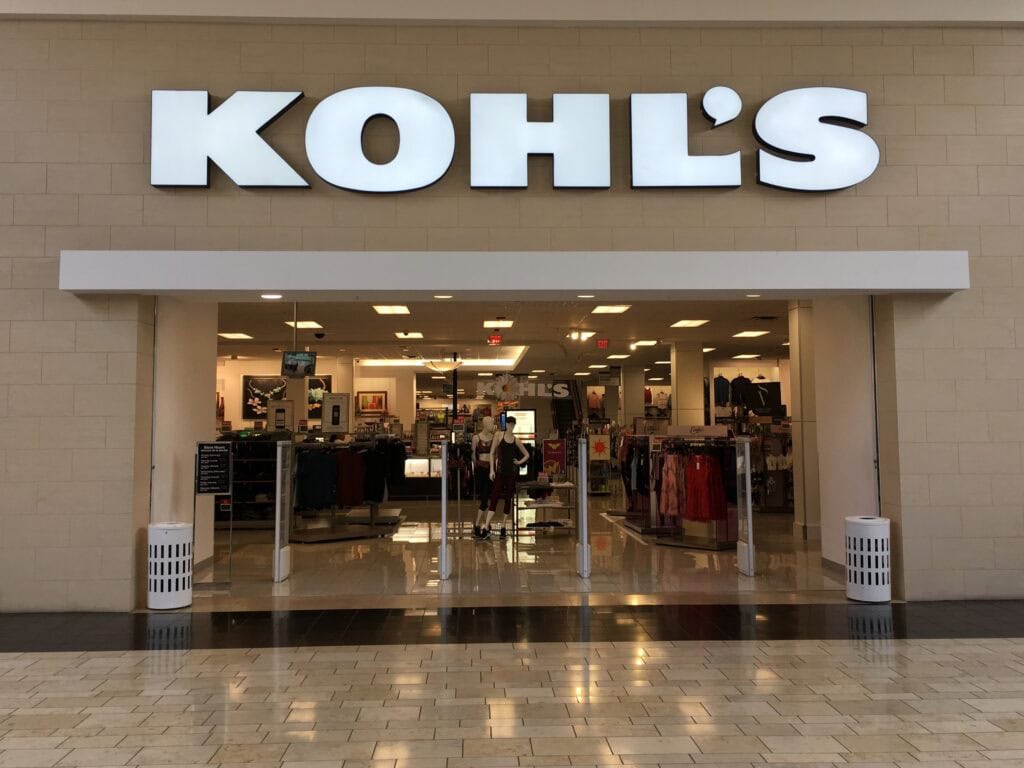
When the mall's value took a hit
The numbers told a more brutal story than the mall directory.
A decade earlier, the property had been valued at about $390 million; by mid-2024, that figure had fallen to roughly $160 million, a 59 percent drop that neatly matched the outstanding debt.
A deal to delay payments kept everyone from losing the property right away, with the owner putting in more money and getting extra time to find new tenants.
By early 2024, more stores were filled than before, and the money coming in was enough to pay the interest again, but the old belief that malls and their loans would always last was gone.
The old Sears building and its parking lot, 13 acres sold to a local developer for just over $17 million, were suddenly seen as a possible spot for apartments.
Early ideas included 450 to 500 regular-priced apartments, restaurants, outdoor spaces, and both indoor and covered sports courts.
In the same burst of deal-making, the buyer acquired the JCPenney building and its parking fields, another 10.3 acres under a lease that runs to 2040, giving the firm 23.3 acres of leverage around a mall.

What does Miami International Mall still mean now?
If the former Sears parcel hints at apartments, the former Kohl's box is pointed at something louder.
After the department store closed in January 2024, the 115,000-square-foot building began its transformation into Elev8 Fun, a large indoor entertainment center heavy on go-karts, laser tag, an interactive mini-golf course, more than a hundred arcade games, 12 bowling lanes, a fitness concept, and a full-service restaurant and bar.
Around it, the everyday mall keeps doing its work.
Two Macy's stores and JCPenney still anchor more than 120 retailers, from fast fashion at H&M to Latin-leaning newcomers like Brazil in Miami and Rio By Design Beachwear, and pop culture shop Metropolis, along with the usual ring of jewelers, sneaker walls, and phone kiosks.
More than twenty places to eat stretch from BJ's Restaurant & Brewhouse on the edge of the property to The Knife's Argentinian grill, 100 Montaditos with its Spanish mini sandwiches, and Moka Café, which layers coffee, pastries, and empanadas onto the standard mall diet.
Miami International Mall is no longer the shimmering novelty in a sea of swamps.
It sits between a global airport and an outlet behemoth, its original fountains gone, its anchors humbled, its loan files thick with amendments.
Yet it remains a kind of civic living room for Doral, hosting heritage festivals, car meets, and the simple choreography of families buying sneakers and sandwiches.
If the apartments get built and Elev8 Fun finally switches on its scoreboards, the property will become something more complex than a mall.
It will be an answer, improvised in real time, to the question of what a 1980s shopping machine can turn into.

